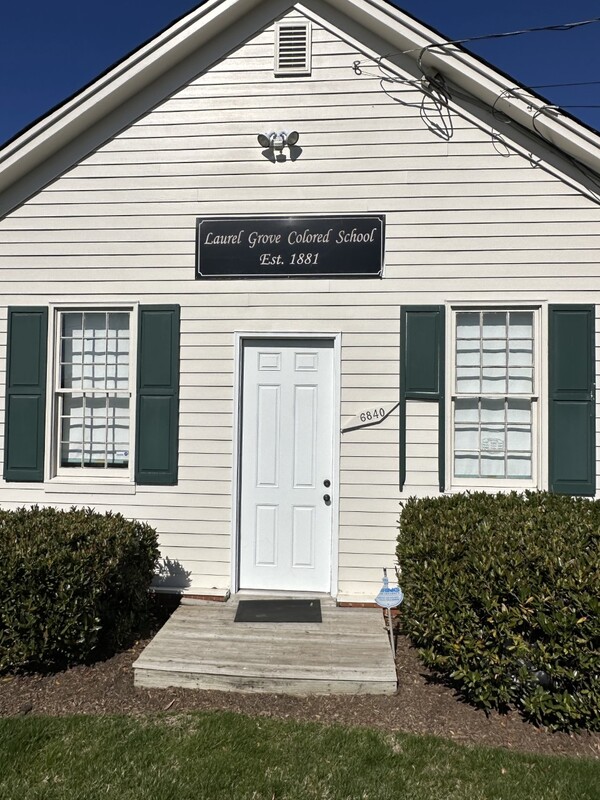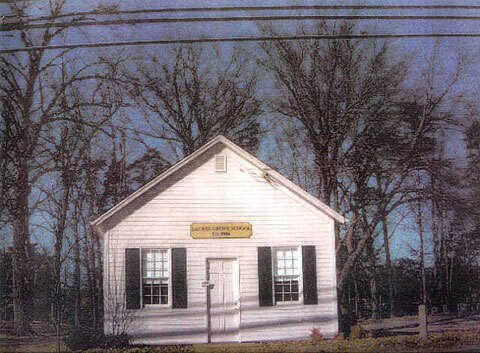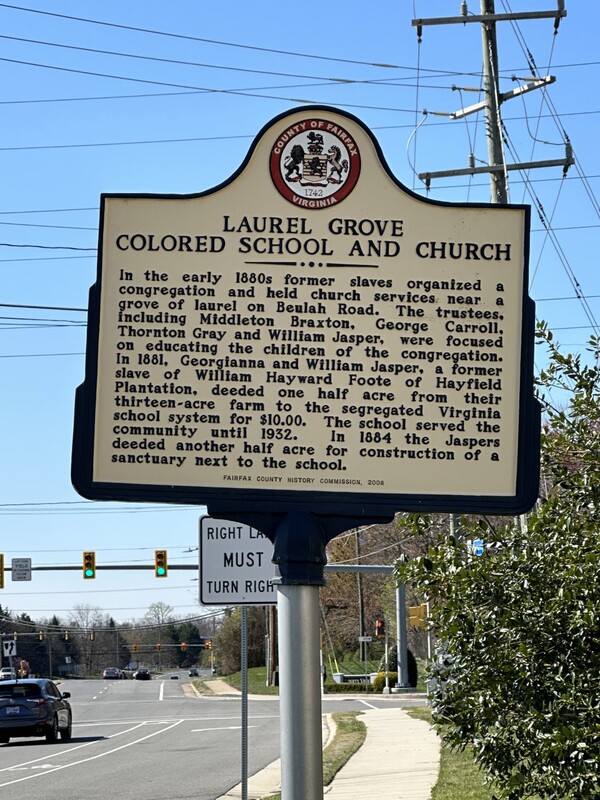Resilience and Remembering in Laurel Grove School Museum
As you drive down Beulah Street towards the Fairfax County Parkway in Alexandria, Virginia, you pass Franconia Elementary School, four gigantic single-family homes, three churches, two cemeteries, and a 19th century one-room schoolhouse, among other suburban homes and businesses. The Laurel Grove School Museum, the grounds of its related Baptist Church, and its cemetery are directly in front of a Metro Park complex. This is the nature of local Black history in 21st century Northern Virginia.
This site on the side of Beulah Street is deeply rooted in the history of the Black communities that built themselves up in these areas following slavery. Following Catherine McKittrick’s theories outlined in her seminal work, Demonic Grounds, Laurel Grove School now serves as a site of memory as a museum, but it began as a site of resistance to the confines of Jim Crow segregation. Throughout its long history and to this day, the Laurel Grove School, Baptist Church, and cemetery have existed as sites of resilience for the Black communities they serve.[1]
The site’s modern development into a museum is a story of resistance to displacement, to use Steven Woolf’s words. He outlines a familiar pattern in his work, Deeply Rooted: History’s Lessons for Equity in Northern Virginia:
“In the 1800s, formerly enslaved Black families were eager to buy land, and build houses, and open businesses. They built dozens of enclaves stretching from western Prince William County to the Alexandria waterfront. However, when the turn of the 20th century brought expanded railroad, trolley, and road service from the District of Columbia into Northern Virginia and heightened demand for suburban housing developers and politicians aggressively sought land belonging to Black families.”[2]
The pattern of suburban development disrupting the lives of Black Northern Virginians continued into the 21st century. It is a miracle that Laurel Grove survived the expansion of the Metro system and the building of the Metro Park directly behind it. While these three sites remain, the original thirteen acres that had stayed in the Jasper/Walker family since it was deeded to William Jasper in 1860 did not. Laurel Grove’s complex history is a microcosm of the Black experience in Northern Virginia. The pain of segregation forcing Black communities to band together for the sake of their children, the constant dispossession of Black landowners, and the resilience shown in communities reclaiming their institutions and histories.
[1] Katherine McKittrick, Demonic Grounds: Black Women and the Cartographies of Struggle (Minneapolis: University of Minnesota Press, 2006), chap. 3.
[2] Steven Woolf, “Deeply Rooted: History’s Lessons for Equity in Northern Virginia” (Patricia Matthews, Northern Virginia Health Foundation, 2021), 20, https://drive.google.com/file/d/1dhdP_BKFCtSKAL1VAwXfNX05sjVBZ5ME/view.
By Rachel Robinson


